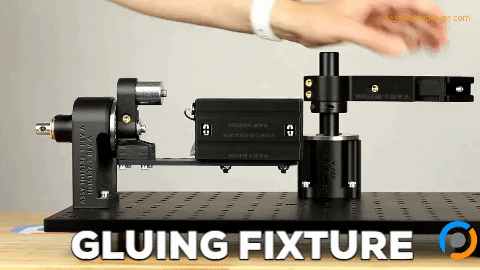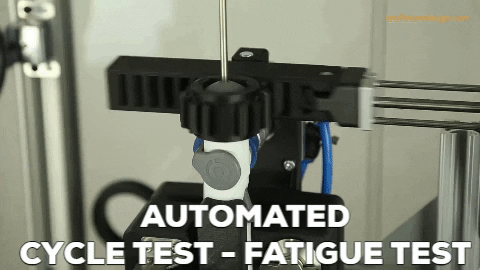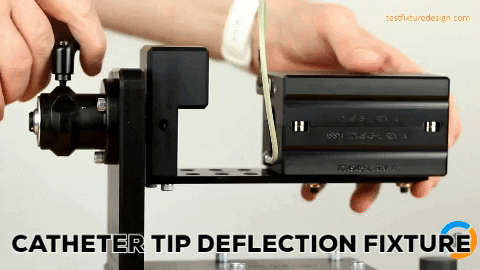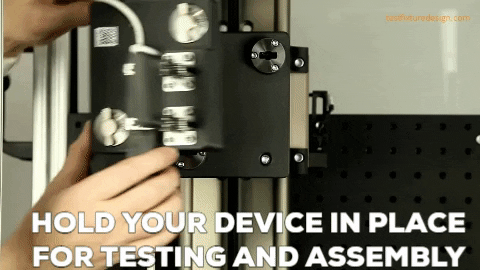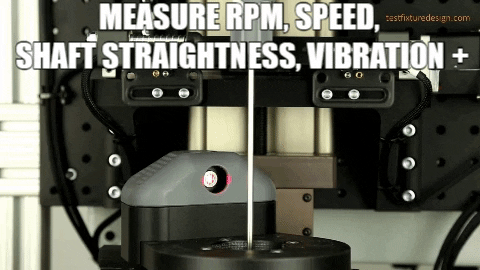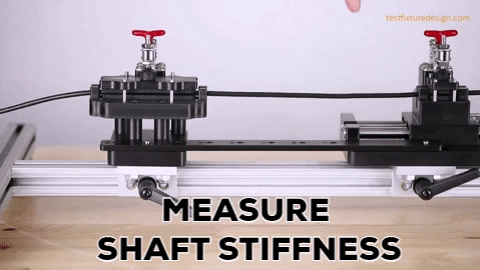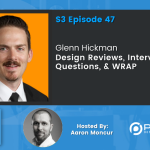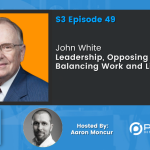Scott Summit | Industrial Design, 3D Printing, & Life-Changing Products
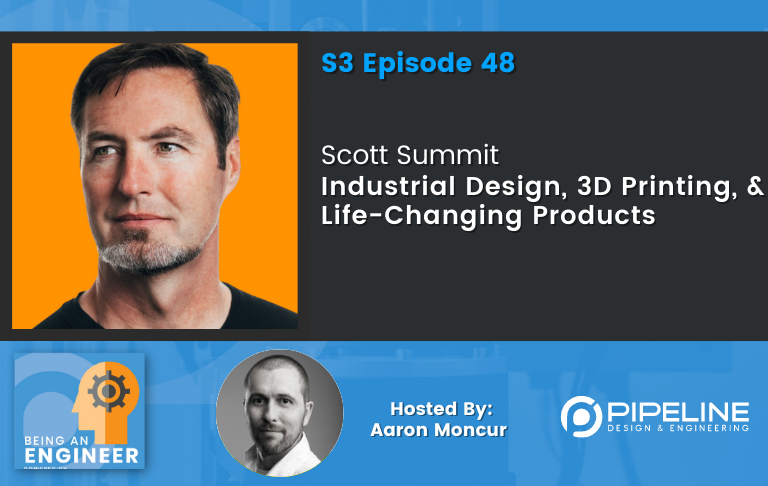
Who is Scott Summit?
Scott Summit is a senior industrial designer with decades of experience in innovation, design, and entrepreneurship. Scott started a company doing 3D printing for exoskeletal fixation that was ultimately acquired by 3D Systems, where he then ran a skunkworks style team exploring just how far the industry can push 3D printing.
http://www.summitid.com/
Aaron Moncur, host
EXPAND TO VIEW EPISODE TRANSCRIPTION
SUMMARY KEYWORDS
design, print, worked, industrial designers, 3d, product, 3d printing, people, process, printer, person, create, brace, scan, custom, scott, shoes, prosthetic limb, interesting, question
SPEAKERS
Presenter, Aaron Moncur, Scott Summit
Presenter 00:00
Hi everyone, we’ve set up this being an engineer podcast as an industry knowledge repository, if you will, we hope it’ll be a tool where engineers can learn about and connect with other companies, technologies, people, resources and opportunities. So make some connections and enjoy the show.
Scott Summit 00:18
And the process, the success of the product process was predicated on getting a 12 year old girl to do something she doesn’t want to do for 20 hours a day for two to four years. You’re not going to win that battle. And the only way you’re going to do that is really hack and rethink that experience.
Aaron Moncur 00:51
Hello, and welcome to another episode of The being an engineer Podcast. Today we’re talking with Scott Sumit, who is a senior industrial designer with decades of experience in innovation, design and entrepreneurship. Scott started a company doing 3d printing for exoskeletal fixation that was ultimately acquired by 3d systems, where He then ran a skunkworks style team, exploring just how far the industry can push 3d printing. Scott, thank you so much for joining us today.
Scott Summit 01:21
Oh, thanks for having me. I’m looking forward to this.
Aaron Moncur 01:24
All right. So, what made you decide to become an industrial designer,
Scott Summit 01:28
I think a lot of industrial designers ended up in that path the way I did, which is that we don’t have the attention span to be an architect. We want to be a little more focused than a fine artist. And we don’t have the sense of rigor to be an engineer. So you know, process of elimination that puts us straight into industrial design.
Aaron Moncur 01:48
I think you’re being a little bit humble. Scott, I’ve now read several things that you’ve worked on. And I think that you have, at least it seems from the outside that you have quite a bit of have call it. Design rigor. At least that’s what it seems like to me.
Scott Summit 02:03
Design is fun. At the end of the day, it’s what I did as a kid, I just didn’t know it. I did it informally with cardboard and duct tape. And now when I do design of any kind, it is a rigorous operation, but it’s just a lot of fun as well.
Aaron Moncur 02:17
Yeah. Do you remember any of the cardboard and duct tape designs you worked on? Is? Is a child?
Scott Summit 02:25
Yeah, well, I grew up kind of alone up in the hills. And so I inherited this great set of tools from my granddad. And so I had this, you know, early 20th century tool, garage, and built everything. Wow. Yeah, I made miserable messes, but that was childhood.
Aaron Moncur 02:46
What what kind of tools were they that you were using?
Scott Summit 02:49
These are these great old like wooden handle wrenches, and, you know, hammers and very clumsy stuff, planers, and things like that. Simple stuff, but there’s a beauty in the overall construction of it all, no plastic, all just heavy cast metal. And I love that there’s a real title of those products.
Aaron Moncur 03:09
Yeah, that’s great. Well, a lot of the will kind of get into some of the things that you’ve done. But one area where you spent quite a bit of time is this area of orthotics and prosthetics. And from what I’ve seen of your work, is they’re designed with very, very beautiful, organic shapes. It’s definitely not these over engineered, bulky tools from the early 19th century that you used. Growing up. The designs that you’ve worked on are again, very beautiful and organic. What what CAD system or systems have you been using to create these shapes?
Scott Summit 03:49
Yeah, that’s a sticky one, because I started using probably, what probably three or five or something like that 30 years ago. And so it just became a lingua franca. And I never got around to evolving to another cat app. Um, it’s exactly the wrong cat application for what I do, which is highly sculptural stuff. I’m going to give you the into Unreal, a lot of scan data going in. IT Pro is the perfectly wrong software. And so actually, as of this week, I, I decided to not renew my license and I’m switching over to Autodesk fusion 360 It makes a lot more sense for what I do. And actually in my team of 3d systems, I made sure not to hire anybody who was like me. I hired guys who were really good at. I know 3ds Max, Maya, Moto, all the other tools and I wanted nothing to do with 3d system or pro probably in my mid lab.
Aaron Moncur 04:51
But you figured it out, I guess I mean over 30 years you were using Pro V I guess it is capable, if not the most efficient tool to create those Those shapes,
Scott Summit 05:01
I could beat it into submission often. And that’s about the way I felt, I felt like we were, you know, if we were people would be yelling at each other, not working the kinds of good out of these blind alleys and just get to these points where pro we just had nothing to offer. And so they would have to send the workout or hire somebody who could use 3ds Max or Maya, because the shapes when you go down that path, and you say, okay, like, we’re going to do a scoliosis brace, you start with a 3d scan of a girl’s torso. And then you have to clean up that scan. Okay, that’s done in Geomagic or, or Meshmixer. And then you have to create surfaces out of it, of the surfaces, you have to punch holes in it, that fenestration that lets the girl skin breathe. So that might be several 1000 holes, and they can’t be round, because interesting geometry. So this might be elliptical, or algorithmic. And then you have to offset that with a thickness. Now every one of those 1000, several 1000 holes has to have a radius on it, because otherwise it will be too sharp against the girl’s body. So you tried to do that in solid modeling, and you’ve got a really ugly month ahead. In 3ds. Max, that’s about an afternoon. So it was after I was braces, I just realized I have to just hire 3ds Max guys.
Aaron Moncur 06:23
Interesting. Yeah. Like Rhino was kind of the the answer I was expecting to hear not not probably for sure. I mean, probably SolidWorks they’re kind of the same thing. I don’t know Rhino at all. But I would expect that someone who creates works of art, like you have is in a program like that. I don’t know. 3ds Max very well. But I assume it’s similar to Rhino.
Scott Summit 06:45
Yeah, they seem to be similar. I don’t I don’t know how to use any of them. But my team did and so on.
Aaron Moncur 06:52
And so you’re moving to Autodesk. What was it? 360?
Scott Summit 06:57
Yeah, Autodesk fusion 360 60. From what I can tell Autodesk fusion 360 seems to have more of a direction into the future, because they are looking at a really nice seamless integration of topology optimization of getting into virtual reality and really integrating that well. And then connecting with some of the the other software’s like gravity sketch for virtual reality. For for you with unity, and with Unreal, which are becoming more and more significant in design and development environments.
Aaron Moncur 07:34
Okay, so you decided on fusion 360. Not necessarily because it has all these brilliant 3ds Max Rhino, like organic sculpting tools, but more because of the future of what they’re promising getting into the virtual reality and, and things like that.
Scott Summit 07:52
There’s that. And also, I had to steer away from Pro V. Pro, PTC is free. There. We start that again, please. PTC uses VARs, for everything that it does as far as sales, and that grew old after a number of years. And I was really done with working with VARs, to install their software to pay VARs constantly for whatever VARs felt like charging me. And I never really saw the VA out of VR. I just saw the AR. And so
Aaron Moncur 08:26
well said, well said, Okay, well, a lot of the people who listen to this podcast, not all of them, but a lot are mechanical engineers. So what what should mechanical engineers and mechanical design engineers know about working with industrial designers that will allow them to work more productively together?
Scott Summit 08:47
I think that’s a really important question that maybe doesn’t get explored enough. In Silicon Valley here. It has such a rich design scene that everybody knows how to work with everybody. And then usually everybody has either seen each other at Burning Man or, you know, having cocktails in the evening. So we all it’s a kind of a happy family, between the mechanical engineers and product designers and industrial designers. What works really well is that a lot of the PD me people come out of Stanford here. And their program especially focuses on working with industrial designers specifically, so that they don’t second guess what the ID guys are trying to do. They don’t challenge it, and they don’t undermine it. They try to work very synergistically with them. And that when you’re doing consumer product, like the work I did for Apple and Silicon Graphics and such, that’s really important that you don’t bet the ID person doesn’t have to justify what they’re doing, and have to argue all the time because that’s really not what we went to school to do. And I think on the other side of the equation, the other half of that synergy is the industrial designer has to know a lot about the challenges that are going to be faced by the me person because the They can’t throw out shapes that have undercuts or varying wall thicknesses, or they, they really have to understand their injection molding characteristics, or CNC or whatever the downstream process is, they have to know that very well. And if they don’t, there will be surprises in the process, which will be time consuming and inexpensive.
Aaron Moncur 10:22
Going back to the complex shapes that industrial designers might create, as part of their designs, especially since you use Pro V for so long. And some people listening to this, I’m sure use Pro we probably a lot of people use SolidWorks. And there’s similar programs. Are there any pro tips that you can share about how using one of these? I’ll call it more mechanical design, CAD programs, probably or SolidWorks. To to create some of these complex shapes in CAD, it’s probably kind of a tough question to answer without sharing the screen or something. But anything that comes to mind that might be helpful for for those working on these types of shapes or products.
Scott Summit 11:04
Yeah, I found that after 30 years of using Pro AV, it could do the things that I needed. In less I ran up against its fundamental shortcomings laid out the geometric complexities that I was wrestling with. But I ended up doing lots of of lofts and toroidal blends, and, you know, boundary patches and things like that. It sometimes worked, but I think I yelled at the machine quite a bit for any success like God. It was
Aaron Moncur 11:35
it was a hard one success.
Scott Summit 11:39
Yeah, exactly. It’s really meant for designing the next 747 More than complex prosthetic limb or something to that effect. Yeah.
Aaron Moncur 11:49
Okay. Well, you were the design director at 3d systems for for several years, can you share some of the products that you helped develop during that time,
Scott Summit 12:00
it was a really interesting time in 3d systems because it was transitioning from a company that made big industrial equipment that got stuck in a garage, which is traditionally where 3d printing was back in the early 2000s. In 2000 10s, they were transitioning toward becoming more consumer facing. And even their industrial products wanted to really step up their game because it was becoming a competitive market with EOS and Stratasys. And some of the other big 3d printing coming companies coming along with beautiful products. So on the one hand, we were charged with coming up with the design language, the color texture, callouts, radius, call outs, things like that, that created a cohesive design language and brand language among all the products from million dollar metal printers down to desktop consumer printers, there was some of that. And then also, the company decided that it was going to get into consumer in the mid 2010s period. And that is a bold venture for an industrial company. So we had to really look at how we’re going to get this kind of unfamiliar product at the time, you know, a 3d printer, a few FDM ‘s existed at the time, but it was it was a pretty new new toy on the scene, how we’re gonna get that usable and easy and comfortable to an entry level consumer. So we put a lot of energy into that as well. And then on in the other direction, we’re also a skunkworks. So we would get tasked with all of the weird things that nobody else in the company could address. The game was a very engineering heavy company. So we were the sink trap, you know, when somebody would come down the pipes and say, Hey, can you 3d print an acoustic guitar? Can you 3d print? The sound that a dolphin makes? Can you 3d print this weird thing that this weird, you know, black operations group in the military is exploring Can you do that? Can you look at architecture? Can you do ceramic, you know, all this stuff? It was my little team here in San Francisco, and we would get this crazy project in our lap and we would just drop everything and Hackett. So we were kind of design hackers during that time.
Aaron Moncur 14:16
That sounds really, really fun. I mean, was it just a blast working there? Or does it sound great on the outside, but really, it was just like, impossible project after impossible project.
Scott Summit 14:26
The cool thing is I had a fantastic team, and they’re all industrial designers. And they all knew multiple software’s and they were all hungry for more weird stuff. And if there was any resentment in the team, it was because somebody got a weirder project in somebody else. And so they’re jealous. Because they didn’t get a weird enough project going in their lab. That’s just the kind of personality that I sought out. It’s certainly the kind of God and that made it fun for everybody that there was such an eagerness to take on really unexplored to territory and see what we can do. It was fun. It was highly stressful, of course, because we’re doing it under the gun. I was on an airplane once or twice a week. And it was we there were plenty of failures, you know, plenty of times where we had to just throw up our hands and say, Well, you know, this is because we’re kind of cat. Because the technology isn’t getting us, you know. So it, it was all over the place.
Aaron Moncur 15:27
Very cool. Well, it sounds like an exhilarating environment in which to work. I guess. When you were at 3d systems you you also worked at Red with Will i am of Black Eyed Peas and several other things that that he’s done over the years. But what what was that? Like? How did will i am even find his way to 3d systems? And like, what What were you guys trying to accomplish together? Yeah,
Scott Summit 15:51
well, was kind of an unexpected surprise guests who stayed for a couple of years. The company 3d systems was run by Avi reichental, at the time. And he was a very bold CEO. And he wanted to create certain chemistries that were very unexpected. And as we 3d systems were getting into the consumer play, he wanted to have a really iconic consumer person to stand out there and tell our story. Will was great, because he’s super charismatic, very smart. But also, he has a, an accessibility to him. He’s a very friendly person. And he loves technology. And so he was kind of the outward facing face of the company who showed people that here’s this new weird tech coming, and it’s really cool. And so it says a lot of fun working with him too, because he has a very young spirit. And we were down at his lab in Los Angeles, it’s a city block by city block lab called the future. And this is amazing place with sound, and green screen studios. And then it had a fantastic maker lab in it, where he had 3d printers and all kinds of stuff going. And so we did a lot of brainstorms down there with them.
Aaron Moncur 17:11
How cool Do you remember any of the projects in particular that you guys collaborated on anything stand out as being particularly interesting or successful?
Scott Summit 17:24
Yeah, one of the products we did with him by design the cube printer, which was 3d systems, consumer FDM printer, and then we re investigated it with will, and decided, okay, let’s make it a high watermark of, of environmental forward thinking. And this is, so we went over it piece by piece to see how we can reconsider it through that lens. So for example, it had this internal part of visible kind of lens part that was backlit, we decided let’s make it out of the red material recycled from automotive tail tail lights, because this is beautiful, consistent read, I believe either acrylic or polycarbonate. And then the, the material that are printed was P T was rpgt, recycled PT, which turned out to be a great material. And we had a deal like this with Pepsi for a while to take their recycled bottles, and turn them into filament. Oh, cool. So that was that was a will project right there.
Aaron Moncur 18:29
Nice. That’s very neat. I looked at that cube, as I was preparing for this episode. And one of the things that struck me just a design choice that you and your team made was, there’s this covering the filament spool, I think that’s what it was. There’s kind of a frosted, I guess it’s like a polycarbonate probably something like that frosted clear material, and just the fact that it was frosted, so it kind of blurred the the material spool inside of it was such a striking, cosmetic, and I really, really liked that it was just to me seemed like a very cool design choice.
Scott Summit 19:10
Thanks for noticing that. That was a very hard fought battle. And this speaks to your first question about how industrial designers and engineers relate. Because there were people in marketing who said, Wait a minute, the case has to be opaque, because otherwise people will see the material. And they will. They’ll see how little material they have left. And that’s a bad marketing decision. And so we in the industrial design team said, Wait a minute. If we make it clear, you can see the color. You can see how much you have left. You can you can watch your spool deplete so you know when to buy another one? Things like that. And it didn’t it doesn’t seem like that should have been such a hard argument. But it was because it led to all kinds of marketing decisions that we had to second guess. So that’s that’s kind of typical with the corporate world is there’s a lot of arguments for every achievement.
Aaron Moncur 20:00
Yeah. Oh, how interesting that it’s interesting to hear the behind the scenes story of how that went down. But just from a visual cosmetic aspect, I loved that feature. That’s what stood out to me when I, when I looked at the cube, I really, really liked how that turned out. Well. You you spent several years as an advisor to a group called make in space. What What were some of the goals of or I’m sorry? Was it made in space or making space
Scott Summit 20:28
in space? It has made space as a is a track off of Lost in Space.
Aaron Moncur 20:33
Ah, okay. Got it. And what, what were some of the goals there? And how do they take shape over the time?
Scott Summit 20:41
meeting space was a really unexpected, interesting group. I was lecturing at Singularity University, which is very forward thinking. And so it’s like, Chinese menu meets a TED Talk, a really interesting place. And some of my students came up to me and said, Hey, Kate, as you know, they were 3d printed in space, or in zero gravity. And we said, well, as far as anyone knows, no strangest question. So then they said, Well, is it possible? I said, Well, probably not within SLA, and probably not within SLS. So that leaves an FTM. Let’s see what we can come up with. So we flipped a machine over well, first, first, we went out for cocktails. And we had a lot of margaritas and that I think predicates a lot of innovation. And over a nfdm and in rubber banded the plate into place. And it printed great. In fact, the characteristics were unchanged, upside down or right side up. And so testing, yes, that then led to them getting some funding from NASA. And we brought on I was made a one of the advisors and they brought on another advisor, a great guy named Denbury, who’s a multi trip astronaut, and guy from from otter vest and Gonzalo Martinez, wonderful, brilliant guy from their office of the CTO. And so we talked about why you would 3d printed space first, which well, one of the reasons is that they don’t have resupply up there resupply is extremely difficult. And they do a lot of stuff ad hoc, there’s a lot more duct tape and baling wire than you would expect going on in the ISS. And then it makes a lot of sense, if you can ship raw material up there, that is packed 100% dense into your fabrication in situ, then you are making much better use of the space that you are the volume that you are holding up to the ISS. So it just made sense from a lot of from a lot levels, then the challenge was to create that printer. So the guys in min space they spent a couple of years and the time wasn’t it wasn’t all that hard to build a printer it was really to qualify the parts and the materials and the printer because the ISS is the most regulated piece of property on Earth are off Earth. So they said pretty much you have to qualify where we which mine the metal to make a machine screw comes from you know that it’s a little bit of an exaggeration, but it’s because it’s such a regulated environment 3d printer up there that has their own characteristics and off gassing everything else. Everything gets weird, and you know, to contain their environment. Yeah. But um, in my job is visor, I decided to the weird thing I would do is request that they provide Tang at all of our advisor meetings. Okay, so they track down Tang, and then we decided it doesn’t even taste very good. And then Dan very that’s not said actually, that’s not true that don’t drink tang that was used once for a promotional thing for for Tang in the 70s. Then after drinking it so, so much for my
Aaron Moncur 23:58
taste so bad.
Scott Summit 24:00
Since the machine has been up there, they’ve made 2400 parts. So it’s it is in range. Really. Yeah. And then the Russians built their own version and it blew up on the launch pad. The rocket didn’t I don’t know, if you’d up. The The group then was given $100 million from NASA to print outside the craft, which is much harder because you have extreme thermal characteristics, radiation micrometeorites, all these things. And I haven’t talked to them in a while but I suspect that’s where their energy is going right now because you can build potentially mega structures in a multi kilometer structures in space. If you’re printing it and holding up simply raw material.
Aaron Moncur 24:44
Yeah, yeah. That seems like a great candidate for building you know, space stations on Mars or the Moon, things like that.
Scott Summit 24:53
They can print from a meteorite because they have a lot of iron and nickel in them. And so there was an exploration to see You capture a meteorite, grind it up, process it, and then print a part out of that meteorite. Oh, how interesting. And we prove that yes, you can.
Aaron Moncur 25:08
Wow, very cool. Well, I’m gonna take a short break here and share with the listeners that Team pipeline.us is where you can learn more about how we help medical device and other product engineering or manufacturing teams develop turnkey equipment, custom fixtures and automated machines to characterize, inspect, assemble, manufacture and perform verification testing on your devices. And we’re speaking with Scott summit today. So Scott, it seems like 3d printing is is kind of your niche within design. Why? Why did you gravitate so strongly towards 3d printing? And and looking back? What would you choose that same path again,
Scott Summit 25:57
it’s interesting, because I didn’t gravitate to it as much, it was simply a means to an end, I gravitated to challenges, mainly to looking at how to create a 3d printed product or a prosthetic limb that was of higher quality that represented a level of design that was in achievable any other way. And I looked at different variations of thermal forming, vacuum forming, pressure forming, short run injection, things like that. None of them were going to get me to where I wanted to go. And so 3d printing seemed to make a lot of sense. And it opened up a lot of doors, because it showed that the versatility that is inherent in a 3d printed design process, lets you create something for an individual in a way that you really can’t do any other way. And that back in 2007, that was a fairly radical idea. Now it’s, it’s becoming more than norm, and increasingly so. But back then it was, it was pretty exciting to see that you could, instead of designing something for millions of people, which is what a typical industrial designer does, you can design for an n of one. And that’s a very different frame of mind that you take into that equation. It’s more like a craft a traditional craft or a bespoke craftsmanship. And that I thought was a really interesting hybrid of disciplines to explore.
Aaron Moncur 27:25
Having so much experience using the 3d printing process, Do you can you foresee any any types of innovations or advances in the next five years or so especially since you were working with 3d systems as well, I’m sure you had some behind the scenes visibility there to developments that are going on. But anything in particular that you see coming in the next five years or so within the realm of 3d printing, that’s, that’s really going to make another big leap in how we make things.
Scott Summit 28:00
I think 3d printing is going to continue on the trajectories in every direction that it has been going. And that alone is exciting enough, for example, 3d printing architecture that is happening. And there, if the regulations ever catch up with you know, it’s a highly regulated industry, then it will really come into a life of its own. It’s very nascent, it’s really exciting to see what’s going on. Especially if you look at like what is happening in the Netherlands and what MX 3d, Joris laarman Scroop out is doing out there in Amsterdam. There’s amazing stuff in that category. And then you had a guy on a few weeks ago who is doing patient specific design, 3d printing patients specific parts, for exotic surgeries. That is pretty stunning, because all of a sudden, doctors have a new tool that can save lives and address medical needs in ways that we’re never before possible. So that’s really cool. Printing for micro devices and devices that are extremely small with this different new types of printing, that’s exciting, printing shoes for on a custom level, we will see that so that when you buy your shoes, they will be made for your body and your gait and any idiosyncrasies that you have. I’m really looking forward to that, because that will solve spinal issues and things like that. And then I think that the thing I’m most excited about is that it will continue to be increasingly a device for groups like high schools in grade schools even. Because what that does is it gets kids excited about the iterative process about the tried and failed process, which I think leads to ultimately a generation of designers and innovators. That is a cut above our generation, because they had these tools at their disposal from day one. And I think that that gets especially exciting.
Aaron Moncur 29:55
Yeah, absolutely. Speaking of spy under conditions, you’ve done quite a bit with prosthetics and orthotics, particularly within the context of 3d printing. And for those of you listening, we’ll include a link to Scott’s website where you can go and see this. And I, I highly recommend that you take a look at some of it, because it’s it’s really cool stuff that that Scott has designed. Scott, can you talk a little bit about how you got into that space?
Scott Summit 30:25
It was interesting. I was originally looking at 3d printing prosthetic legs, because I wanted to create something that was a cut above what was available traditionally, and what mass production could create. And so it created a process where you can 3d scan the person’s roommate residual limb, it’s called the soundside limb with a scanner that we invented, because you couldn’t do that with a smartphone back then. So we had to invent different smartphones, actually, back then in 2007 ish. So we invented a structured lights, time phase scanner, and a stereo photogrammetric scanner that could captured captured the body. And we worked with, with Walter Reed and Balboa and center for the Intrepid. And because they had plenty of soldiers, and they were they were interested in experimenting. And so then we created a parametric process where we could take that scan data, use Geomagic to clean it, and then 3d print the new prosthetic limb. So that that I was very intrigued by it, because you could using parametrics create something that’s both mass produced, as far as it is a automated hands off process for the most part. But it is also custom per person, it’s entirely bespoke. So that’s when the company bespoke. And then, and then you can add a sense of beauty to it through the design and the contours and proportions and things that it wouldn’t otherwise have. And it’s not purely a cosmetic role that that plays, because you’re trying to get the person to thrive not just to not fall over when they walk, you’re trying to really get them to embrace their body and their form. A lot of times you’ll have people I had one woman, she was a Boston Marathon victim, you know, her leg was blown off when the terrorists fired up the bomb. wanted to give her a sense of her beauty back, you know, and you can’t do that. Using conventional methods, you have to see through the eyes of an artist to do that. And then the scoliosis treatment was especially interesting because the process as it stood stood before was that a an orthopedic actually prosthetist, the guy who’s making the brace, they would make a brace and it was a big chunk of polypropylene and they wrap around the kid and they’d heat form it and things like that. It looked horrific. And the process, the success of the product process was predicated on getting a 12 year old girl to do something she doesn’t want to do for 20 hours a day for two to four years. You’re not going to win that battle, you’re talking about a little girl who does not want to do this horrific experience. And the only way you’re going to do that is really hack and rethink that experience. So we created this 3d printing process where with 3d scanner to create a digital twin we offset the geometry. But also then we created a brace that looked more like lace. And it seemed to her more like lingerie, and more like a bodice or a corset. And she got to choose the pattern, which really kind of framed the story more as fashion than as medicine. And so it was all about getting into the psychology of a 10 to 12 year old girl and hacking how she thought of this experience that she was about to have to deal with for the next couple of years. And so we found that in that case, design and fashion, bringing that sensibility into the process made for higher compliance. And higher compliance means greater efficacy. So it was a strange process where medicine was impacted by design and fashion. And so the beauty of the product translated directly into the effectiveness of the medical outcomes. And there are a lot of situations where that was the process, but that that made it especially satisfying and exciting.
Aaron Moncur 34:22
That makes a lot of sense to me, I think about CPAP machines, right where they’re functional, but people hate using them. The experience is just so arduous and uncomfortable, and so they end up not using them. So there’s a medically poor outcome because of the experience of using this product. And one of the things that struck me as I was looking at these, these orthotics and prosthetics designs that you have created was was that they really they look like a fashion accessory, not a clunky medical device. And I’m sure these poor people were used to having to rely on something that was functional but probably looked terrible. And so once, once your solution came along, and all of a sudden, the it’s not just a functional solution, but it’s something that’s, that’s beautiful as well that hopefully they’re proud to wear. And it’s like this this really cool fashion accessory. How did people respond to that, you know, coming from the place of just having to put up with this functional but kind of ugly contraption and then being presented with this really beautiful solution.
Scott Summit 35:40
It was as successful as we had hoped, that girls suddenly started showing each other their braces, which typically is not what you do when you have this kind of something that looks like it came out of a Frankenstein movie. The structure started showing it off, they’re proud of it. I think the high watermark in that experience for me was when there was a 3d print show at the Louvre in Paris, downstairs of all places. And so we had the brace on display there. And a French woman was was staring out for a while and she asked me in French, she said, this is beautiful. How do I get one? And I looked at her I wasn’t prepared. I said, well, and I’m trying to translate this into my bad French. And I’m saying, Well, this is a medical product. It’s for scoliosis, I probably didn’t translate that well. And she thought about that. And she said, Okay, how do I get scoliosis? And while I said, I don’t have a translation. We’re at an impasse here. But it did say that, okay, she we had reached our goal, which is that we had stepped out of the medical world. And we had created a desirability as a fashion product, which reframed the question, it hacked it correctly.
Aaron Moncur 37:04
Yeah. Wow, what what an amazing feeling that must have been. You, you read on your website that I’m most excited by the products that result when a designer has relinquished agency in the process and product to a variable beyond their immediate control. The designer must willingly accept that an outside force will be co designing their product, often leading to unanticipated and ungovernable results. Can you explain a little bit more what you mean by this, and if there’s an example that you can share from your own professional life, that would be great as well?
Scott Summit 37:42
Sure. I spent, I guess, the first half of my career doing injection molded parts doing doing a consumer products for Apple and whatnot. And everything was destined to be injection molded. And I found that was very unsatisfying, at the end of the day, to spend all this time building this designing and building this great thing. And then you get these injection molded parts with their witness lines and their their draglines and sink marks and things like that. And it just wasn’t all that satisfying. And when they’re each one is like every other one, it feels like you’ve you’ve designed to vanilla at the end of the day. And because you’re not trying to one person you’re trying to appeal to the mass market, and you try to do the best you can. So you’re trying to be the you know, the Madagascar real vanilla bean, vanilla, so the high watermark and vanilla. But at the end of the day, you’re still just in the vanilla constraints. And so I was curious of what happens when you break out of that when you get more along the lines of a custom bespoke thing that is for maybe one person and one person only. And that’s what I find intriguing. And when you basically say, I’m going to only have half of the agency of this process. And so when you’re, for example, when you’re 3d scanning a person for a prosthetic limb, you have no control over the first couple of variables in there, which is the person’s morphology and the personality, those are variables you don’t control. And then you get to pick it up and react to those and integrate those into a process and turn that somehow into a thing of beauty. But you can’t really come formulate the process in advance or the outcome and advance.
Aaron Moncur 39:29
Something that I know a lot about is the price tag that comes along with custom. Do you think that in the future we’ll ever get to a point I guess from a technology standpoint where we can we can truly afford to provide these custom bespoke solutions to people who want them not just you know, wealthy individuals who can pay a lot of money but But even you know, third world countries where I’m whoever it is john doe down the street, will we get to that place? Or is custom bespoke always going to be? For the privileged?
Scott Summit 40:12
That’s, that’s a question I explored for years as well, looking at can you do a prosthetic leg based on a scan, but with data that you then send to the cloud, it goes through a paragraph, parametric model, it does automatically generated FTA and potentially, topology optimization, and then it goes to a printer with some discretionary bandwidth, and then prints it and send it to them that I was never able to achieve. I, I believe that that will happen. And it has to happen, because the number of doctors who can create a viable prosthetic limb is not keeping up anywhere near with the increase of limb loss in the world. So the challenge in that gulf only goes greater over time. So it has to be dealt with, algorithmically automatically, in some kind of exponential way. But, but we actually, in some ways already have arrived at that, for example, Invisalign, is an entirely 3d printed process. And it is, I believe, more affordable than traditional braces. And it’s a largely hands off process, I believe it’s almost entirely automated. And so now we have a better product Invisalign, if it’s, if it’s an option is a more more friendly process than the traditional wires of braces. And that was entirely enabled because I think they print something like 12 and a half million unique products a year for those aligners, and it’s all just happening on SLM machine, excuse me on the SLA machines that are in the dark in a Leitao factory, and they just print vacuform and send, and you get, essentially a custom liner, which costs a few cents to make, but it leads to better outcomes. So in one sense, we’re there. I do think that before long, we’ll have 3d printed shoes that are accustomed to us. I wear the Adidas version that are 3d printed, and they’re wonderful on my favorite shoes. So I think that it’s not long before not only will they be printed will also be bespoke. And that will be an automated process.
Aaron Moncur 42:24
I don’t think I’ve spoken with anyone to date who’s worn a pair of these these custom 3d printed shoes, what was the process like did you have to go somewhere to get your foot scanned.
Scott Summit 42:34
So these are not custom, these are simply printed. And I think that they’re doing them it does a new balance, perhaps Under Armour, Nike, they are mass producing them as a way to start that evolutionary process off. Because first they have to figure out how to get the pipeline of this new product to people like it is or the the mechanical dynamics correct for walking, things like that. And once they dial that in, then it’s the next step. And what I’ve been arguing for years is that the shoe store of the future will have no shoes in it. Just like Uber owns no cars and Airbnb owns no buildings, the next shoe store will have no shoes that it will simply be a gait analysis room, and you walk into the footlocker and you will walk on a gait analysis machine, they will do mocap of you, you stand on pressure plates, they will do a 3d scan of your external morphology or your foot. And then your digital twin is created and you never go into footlocker again, you simply try on shoes with your digital twin. See, if you visually like them from a scan of yourself, which you’re gonna look at a mirror anyway, it’s the same thing, but it’s a 3d version. When you like it, you simply check it off, and it comes to you. And it will be a shoe that will compensate for any gait issues you have, it will be essentially a custom orthotic, it will be designed for running or hiking or, you know, standing at work or whatever it might be. All those characteristics are just algorithmically folded into the design of that shoe. So I’m really looking forward to that day. You know, for somebody I’ve got occasional back problems, looking forward to the day when my shoes are actually designed so well for me that they are corrective. And that’s invisibly folded into the design of the shoe from from its DNA outward.
Aaron Moncur 44:28
Absolutely. What a cool future that you’re describing. There was just maybe one more question and then I think we’ll wrap it up here. What What are a few of the products or projects that you’re most proud of? And and what was their impact on on the consumer or whoever the demographic was?
Scott Summit 44:50
There were a couple of interesting products that we got involved with. Avi reichental, the CEO of 3d systems, asked me if I could design a 3d printed Acoust To guitar, do the first one of its kind. And so I did that. And it turned out to be I thought, pretty interesting because we designed it around the acoustics we worked with the Stanford sound and design research center there. We really dialed in the acoustics and it sounded fantastic. What I thought was interesting about it was that when I sent it out to all the guitar magazines, it got panned. People absolutely hated it. Because psychologically guitars, yeah. And I understand where they’re coming from. They said, guitar is a thing of beauty. It’s a thing of, you can see on my website, I think it’s fairly beautiful. Some that id.com You can see the guitar is a beautiful thing I like to believe. But they say, Well, no, it’s this is craftsmanship. It’s a luthier, working with wood and with their hands. And it can’t be algorithmically generated and 3d printed. That’s just not right. And so I thought that was an interesting outcome. And then it was actually stolen from the gallery space in our lab. In Berkeley, somebody ran and grabbed it and left. And so so I like to do away with quiet backhanded compliment there. Somebody just doesn’t realize that they actually first ever 3d guitar. And I took that as a compliment, because like, I always print another one. So that was a fun, silly one great way to reframe it. And then we worked with a company called Ekso Bionics, which is founded by this brilliant roboticist named Ross angled, and they want to ultimately replace the wheelchair with an exoskeleton robot that wraps around your body and walks you. And it’s an amazing piece of machinery to see work. And it really impacts lives very profoundly. And so we worked with them to do an experimental SOCAR of what their what their machine could be into the future. So we took one of their test pilots, a lovely woman named Amanda Boxtel. And we 3d scanned her and we created the interstitial parts that connect her body to the machine. And we tried to make those really beautiful because this is this is a part of her body, in a sense, it’s an exit. It’s as much her exoskeleton as her exit musculature as as just a part of her symbiotic part of her life. And so we designed and printed that, and I guess in 2014, we took it out to Budapest to debut it to the world. And it was beautiful, and she loved it. And we walked all around Budapest with it and, and it kind of brought tears to her eyes because it for one thing it conformed perfectly with her body. But also, when she’s walking people see her as a person walking essentially with a fancy crutch. And they don’t see her as a person who really is paralyzed from the waist down and has no sensation below her waist. So that was a very, very meaningful, very powerful product to be involved with emotionally and very challenging mechanically. And design wise.
Aaron Moncur 48:05
I bet. Yeah. Wow. How amazing what a wonderful fulfilling project that must have been. Okay, well, Scott, this is just been such a delight getting to talk with you. And here’s some of your stories. Thank you so much for sharing some of your background and time with us today. How can people get a hold of you?
Scott Summit 48:29
My website is www dot Sumit. Id as you mm it id.com. I’m on LinkedIn somewhere, Scott Summit. And then I have a new company out now. It’s called ethereal matter. And we didn’t talk about it at all. And hopefully we’ll we’ll follow on maybe next year with it once we can get funding and go live with it. And it’s a www dot ethereal eth e r e AE L dash mater.com. And that website will give you a little teaser as to what it’s all about. It’s some pretty interesting stuff as well.
Aaron Moncur 49:03
Great. Great. Well, that sounds exciting. Again, Scott, thank you so much. Is there anything else that that you think we should cover that we haven’t talked about yet?
Scott Summit 49:12
Now I’m just especially appreciative that you are doing a show, speaking to engineers in particular, but from the vantage occasionally of an industrial designer, or somebody who’s a little bit out of the the immediate world of engineering, but certainly connected to it at the hip.
Aaron Moncur 49:31
Well, thank you. Thank you. Yeah, we’re all part of the same big happy family, aren’t we?
Scott Summit 49:37
Indeed!
Aaron Moncur 49:38
All right. Well, thank you so much, Scott..
Scott Summit 49:40
Thanks, Aaron. It’s great talking to you.
Aaron Moncur 49:46
I’m Aaron Moncur, founder of pipeline design and engineering. If you liked what you heard today, please share the episode. To learn how your team can leverage our team’s expertise developing turnkey equipment, custom fixtures and automated machines and with product design, visit us at Team pipeline.us. Thanks for listening
We hope you enjoyed this episode of the Being an Engineer Podcast.
Help us rank as the #1 engineering podcast on Apple and Spotify by leaving a review for us.
You can find us under the category: mechanical engineering podcast on Apple Podcasts.
Being an Engineer podcast is a go-to resource and podcast for engineering students on Spotify, too.
Aaron Moncur and Rafael Testai love hearing from their listeners, so feel free to email us, connect on Facebook, Twitter, Instagram, and subscribe on Apple Podcast and Spotify!
About Being An Engineer
The Being An Engineer podcast is a repository for industry knowledge and a tool through which engineers learn about and connect with relevant companies, technologies, people resources, and opportunities. We feature successful mechanical engineers and interview engineers who are passionate about their work and who made a great impact on the engineering community.
The Being An Engineer podcast is brought to you by Pipeline Design & Engineering. Pipeline partners with medical & other device engineering teams who need turnkey equipment such as cycle test machines, custom test fixtures, automation equipment, assembly jigs, inspection stations and more. You can find us on the web at www.teampipeline.us





